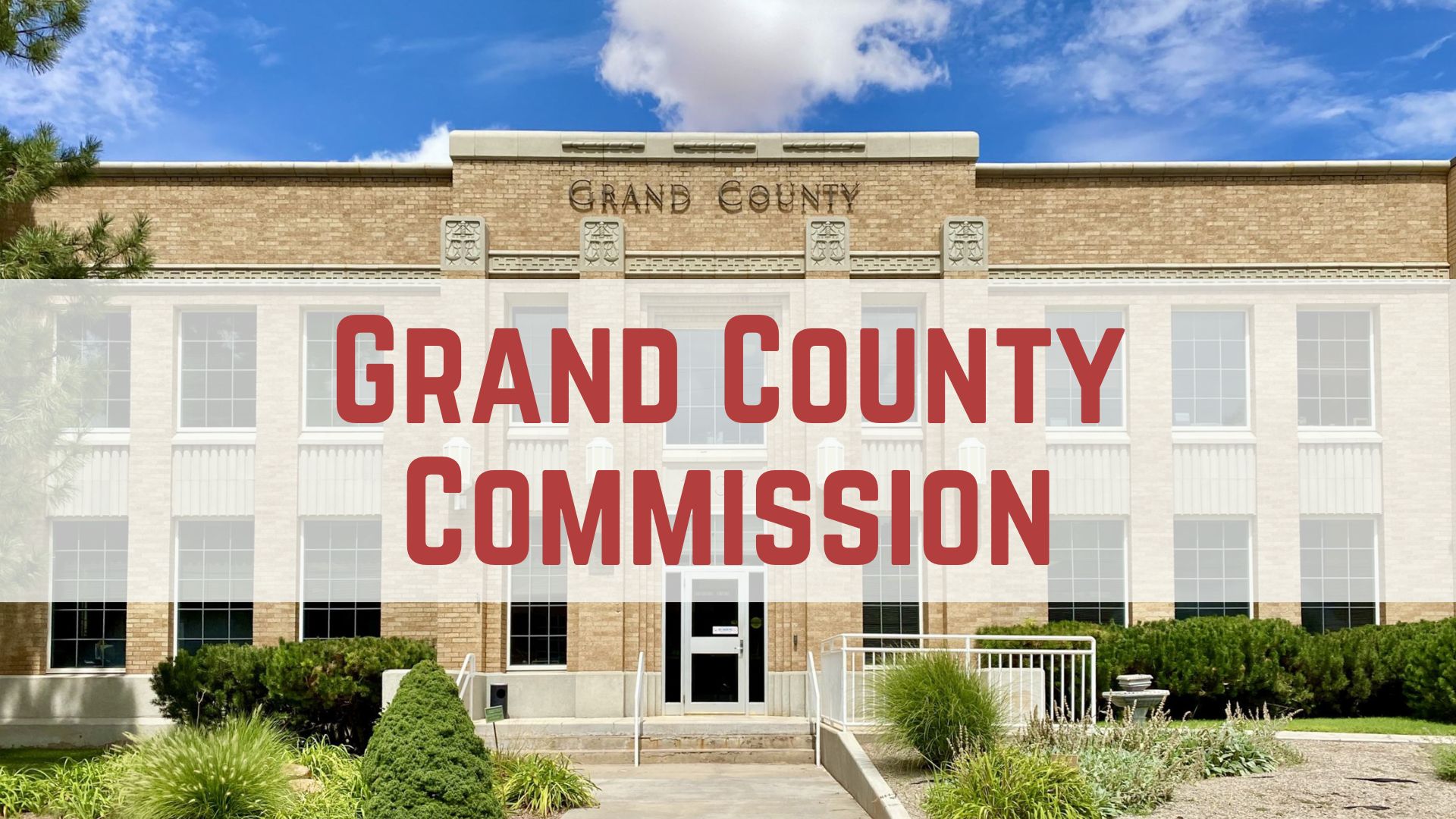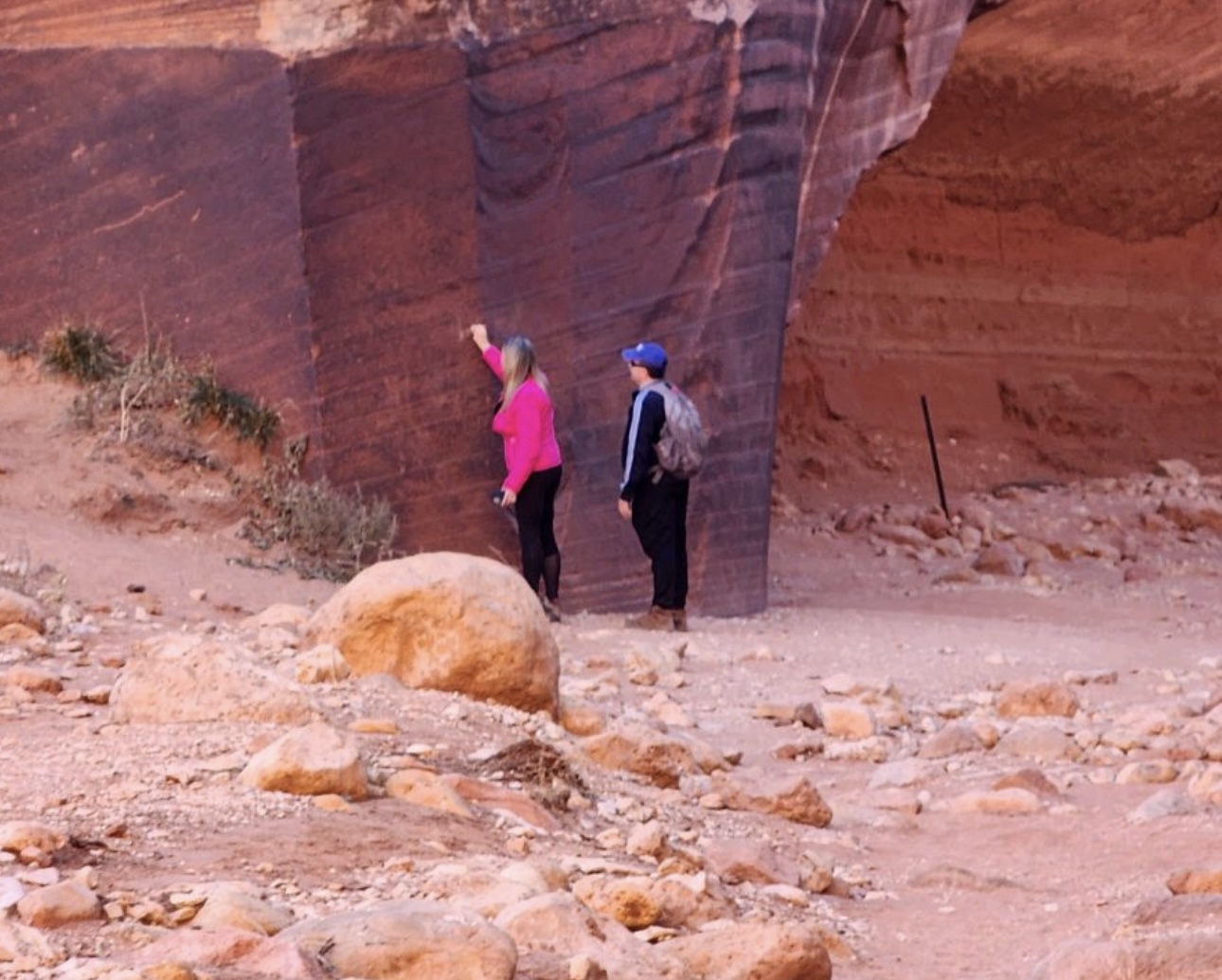Some information may be outdated.
In June, a parcel of land near Looking Glass Arch managed by the Utah School and Institutional Trust Lands Administration was leased to the luxury glamping company Under Canvas to build a new site on the parcel.
The news sparked action from some residents—a petition urging SITLA and Under Canvas to dissolve their lease was created by the group Save Looking Glass. The petition has over 2,800 signatures and the campaign has raised $1,400. The campaign expressed local worries about the scenic undeveloped land that surrounds Looking Glass Arch, a popular climbing and hiking spot.
Under Canvas said they have no established timeline for the project; SITLA recently told the Moab Sun News they will receive a yearly payment of $25,000 while the project is under construction and until the expected opening date of November 1, 2023.
According to Marla Kennedy, communications director at SILTA, once construction is complete, SITLA will receive an annual payment of $110,000, plus five percent of the gross receipts made by Under Canvas on the property. SITLA expects to receive more than $5 million over the 30 year lease term length. The beneficiary for the project is the Permanent School Fund. Earnings from this fund are distributed to every school in the state based on how many students the schools have—recently, the Grand County School District used SITLA money to purchase chromebooks for its students and teachers.
What is SITLA?
Trust lands were granted to Utah by the U.S. Congress in 1896 and SITLA was formed in 1994 to manage 3.4 million acres of trust lands. On a map, those trust lands are set aside in 6 mile by 6 mile parcels, or “townships,” then further divided into 36 square-mile sections. Trust lands form a distinctive pattern—they fall on sections 2, 16, 32, and 36 in each parcel. The dividing borders don’t follow natural lines in the landscape or topography—they were created decades ago.
SITLA is required to generate revenue on those lands for 12 institutions, most of which fund schools. They do so through a combination of energy and mineral leases, rent, and royalties; real estate development and sales; and surface estate sales, leases and easements.
“SITLA works hard to be good stewards of the land while fulfilling our constitutional mandate to monetize the land at the highest value possible,” Kennedy said. “SITLA lands are not public lands, and SITLA does not manage its trust lands for the general welfare or use of the public.”
Why Under Canvas?
Under Canvas presented their application for a Conditional Use Permit to the San Juan County Planning Commission at a meeting on June 10, but haven’t been to a meeting since. At the June 10 meeting, a sitemap, created by the design and architecture firm “dtj design,” showed that the company plans to build 75 seasonal tents in the traditional Under Canvas yurt-style and 100 parking spaces over 13 acres; they also stressed the point that they are a “low impact, seasonal development,” that offers “sustainable and alternative low impact development through minimal disturbance to the land.”
The map showed the development would be a quarter-mile away from Looking Glass Arch.
Dan McBrearty, chief development officer at Under Canvas, wrote in a recent email that the company is still in the process of designing the site plan, with “much yet to be determined.” When asked about the sitemap presented in June, Under Canvas said they didn’t have any details on if the sitemap is still relevant.
Under Canvas hasn’t established or released any timing around the project, he wrote. The new location will work with Under Canvas’s current location in Moab (just north of town, off of Highway 191) by offering “an additional opportunity for travelers to access and enjoy the incredible recreational area surrounding Moab as well as the Canyonlands and Arches National Park[s].”
“Our mission at Under Canvas is to inspire connections with extraordinary people, places and the planet by enhancing access to the outdoors,” McBrearty wrote. “We participated in San Juan County’s established approval process which included public comment, as well as active dialogue with the local community over the summer months, after the news of our plans inspired both excitement and concern raised by misinformation shared which was largely diffused after the opportunity to correct.”
The design ethos of the company is that “nature is the best architect,” McBrearty wrote—Under Canvas’s design embraces natural features and allows guests and employees “to immerse themselves in the environment.”
Details of, and issues with, the lease
Kennedy said at no point in negotiations was restricting public access to the arch proposed by SITLA or Under Canvas. Both organizations took steps to adjust the boundaries of the lease to keep access to the arch accessible, she said.
While public access is assured, Dailey Haren, one of the organizers of the Save Looking Glass Campaign, says that the beauty of Looking Glass Arch comes from “not looking at it—it comes from looking out of it.”
“A development like Under Canvas is proposing would completely collapse this experience,” Haren said. “The motivation for this campaign came from the desire to protect the magic of this space for all to continue enjoying, and to stand up against this commercial interest that will collapse the experience of this place by creating massive overexposure, building its sprawling hotel at its base, and disregarding the communities that cherish it.”
SITLA received no other formal lease applications for the Looking Glass Arch parcel, Kennedy said. When an application is received, SITLA evaluates the proposal and seeks competitive offers on the parcel. If no better offer is received and the proposal would not preclude better financial opportunities in the future, SITLA typically approves the application and begins negotiating the lease. The 240 acre parcel was previously leased by cattle ranchers.
At the end of the 30 year lease, Under Canvas has four 5-year options to extend the lease. They’re required to return the land to SITLA in the “original state at the time the lease was executed,” Kennedy said; McBrearty said at the end of Under Canvas’s lease agreement, “the property will be reclaimed and reseeded with native grasses and shrubs.”
In two years, SITLA expects that Under Canvas will have finished construction.
Appreciate the coverage? Help keep local news alive.
Chip in to support the Moab Sun News.





